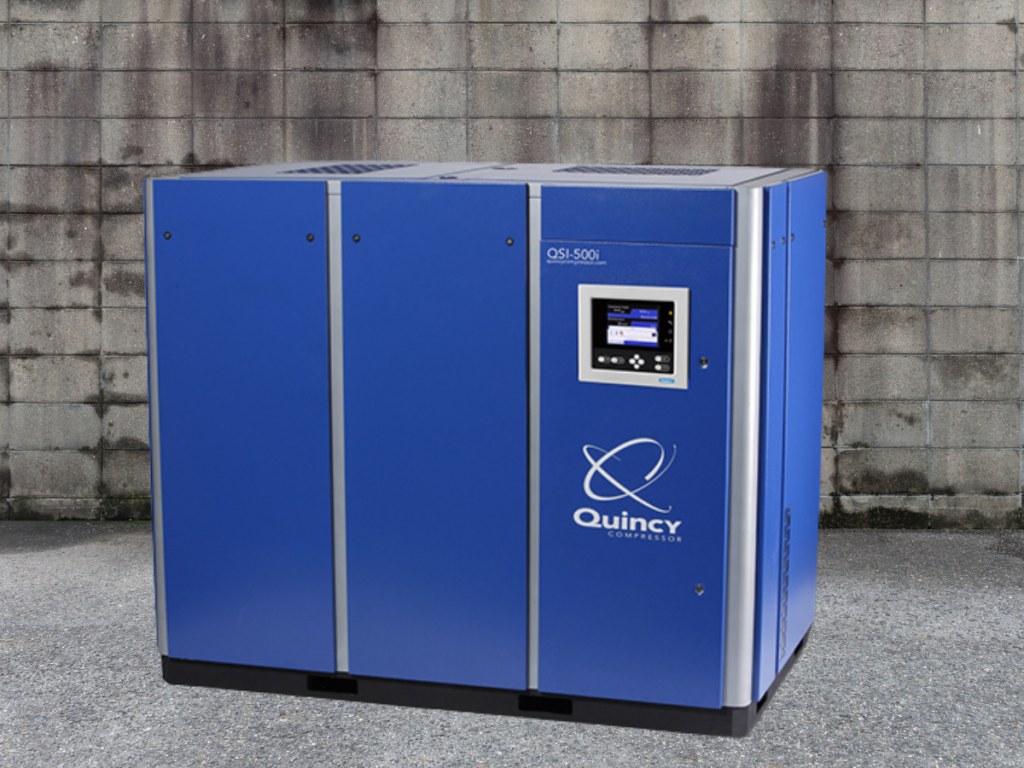Is an Air-Cooled or Water-Cooled Air Compressor Best for My Facility?
During normal operation, industrial air compressors generate a lot of heat. If the heat is not properly managed through an air compressor cooling system, it may cause damage to equipment, impact the quality of produced air and pose a safety hazard. Fortunately, there are two common compressor cooling options – water-cooled or air-cooled. While one method isn’t always more effective than the other, it is likely that one type is better suited to the facility.
This blog will provide a comparison of air-cooled and water-cooled air compressor cooling systems to help make the selection process easier.
Why Use an Air Compressor Cooling System?

But, first, let’s discuss why air compressors are manufactured to provide adequate cooling when operating under design conditions. Some industrial air compressors can reach temperatures as high as 300°F, and the resulting hot air flow can pose a safety hazard for employees, damage air compression system components or downstream equipment and potentially reduce the integrity of finished products.
Without a cooling system the following will likely occur:
- Overheated air compressors
- Damage to internal compressor components and downstream equipment
- Burns or other injuries to employees
- Moisture build up and condensation in the air compression system can damage finished products
Compressor cooling systems are designed to remove the excess heat created during normal air compressor operation and expel it in a safe way, minimizing these risks and ensuring safe and effective operation of the air compression system.
Compressors are available as water-cooled or air-cooled. Each type will be discussed and compared below.
How Does a Water-Cooled Air Compressor Work?
Water-cooled compressors rely on a liquid coolant (usually water, glycol or a mix of the two) from an external source used to cool the compressor and compressed air. This type of air compressor cooling system serves as a heat exchanger in that it uses the circulating liquid coolant to absorb and remove the heat from the compressor and compressed air.
How Does an Air-Cooled Cooling System Work?
As the name implies, air-cooled cooling systems use ambient air for cooling. Most industrial air compressors rely on a fan and radiator to cool the compressor and compressed air. As the heat is removed it is expelled into the surrounding area.
Air Compressor Cooling System Considerations
While both types of air compressor cooling systems will effectively remove heat, there are some significant differences in operating costs and system requirements, which are detailed below.
| Compressor cooling system cost comparison | Air compressor cooling system requirements comparison |
| Water-cooled compressor: In addition to the cost of plumbing and other equipment that may be necessary such as a pump skid, dry cooler, trim cooler or cooling tower, expenses can include electricity costs, water usage costs and water treatment costs | Water-cooled compressors require high-quality water to operate. This means that if a cooling tower or external water source such as municipal water, well or a lake is necessary for operation, water treatment must be factored into operating costs. Many facilities have existing cooling tower systems, but it is essential to make sure it has extra capacity available to cool the water-cooled compressor and meet water quality requirements for the compressors heat exchangers. |
| Air cooled compressor: Air cooled compressors are most common due to lower overall cost of installation, maintenance and operation. However, if the cost of ventilating or ducting hot air out of the compressor room is prohibitive, there is an existing liquid cooling system available with adequate capacity to handle the air compressor, or if it’s a large compressed air system, water cooled may be the best and sometimes only option. | Air-cooled cooling systems require an adequate supply of cool ambient air which may pose a problem in cramped compressor rooms. Improper ventilation will lead to shutdowns and premature equipment failure. In many cases, ductwork can be installed so air can properly circulate. |
| Heat Recovery: Both types of cooling systems can be made more sustainable via heat recovery, which will help offset utility costs. For example, heat that is removed by air-cooled compressors can be ducted to heat the building in wintertime. Warm water from a water-cooled air compressor can be recycled to preheat boilers or another process in the facility. |
3 Considerations When Choosing a Compressor Cooling System
- Costs: Consider the costs of the equipment itself, as well as installation, operational and maintenance costs.
- Facility environment: Air-cooled compressors need cool clean ambient air, so if the environment is hot, dirty, dusty or caustic, an air-cooled unit may not be the best choice. Conversely, if the water used for a water-cooled compressor is from an open tower, well, municipal or lake water, it may need to be filtered and treated before use. If using a closed-loop system with a dry cooler or evaporative tower, they must be able to supply high-quality coolant to the compressor also, and if the system is designed for a water/glycol mixture, water treatment costs may be reduced or eliminated. All liquid cooling systems need to supply coolant at the appropriate temperature, flow rate, and pressure.
- Compressor room: There must be enough ventilation in the compressor room for an air-cooled compressor to operate effectively. Additionally, if the compressor room is located in the same vicinity as the facility’s boiler room, the combined heat may be too much for an air cooled compressor to function well. In this case a water-cooled air compressors may be the best option.
Without the proper air compressor cooling system in place, the compressor and downstream equipment may incur damage, employees may be injured and finished product quality may be compromised. Although both water-cooled and air-cooled compressors can effectively prevent these risks, each has its advantages and disadvantages. The right choice will depend on the available financial and utility resources, compressor room layout and the environment of the application. The air compression experts at JHFOSTER, a Tavoron company, are standing by to help you decide which type of air compressor cooling will be the most cost effective and beneficial for your facility.
